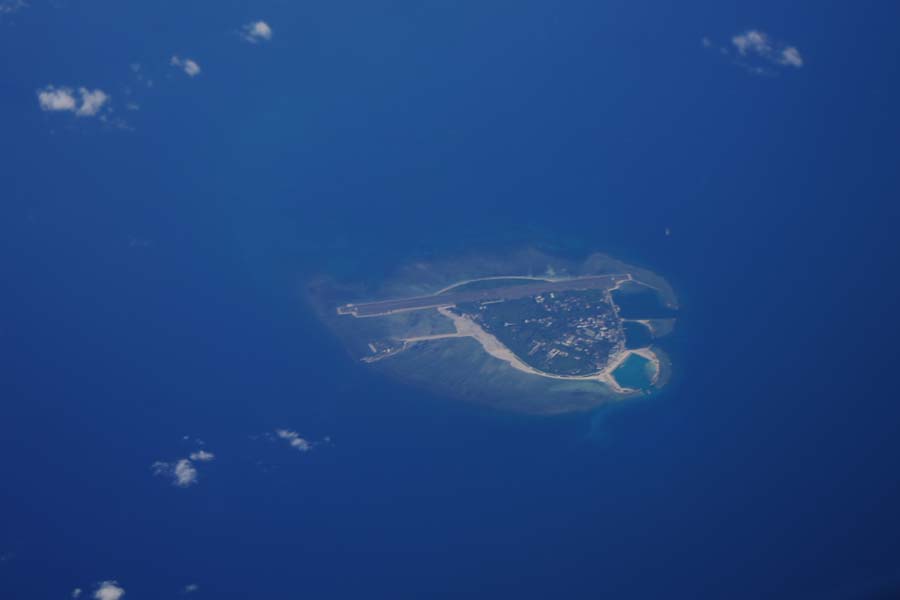
Scientists adjust the underwater glider Petrel-L before releasing it into the water in the South China Sea. [Photo provided to China Daily]
The long-voyage underwater glider Petrel-L set new records for Chinese underwater glider technology with the longest operational duration of 119 days, 862 profiling motions and navigation mileage of 2,272.4 kilometers, prolonging the observation period of Chinese underwater gliders for up to four months.
It was laid out in the South China Sea on Jan 16, 2018, and safely returned May 14, 2018. In April 2018, another Petrel had already made a technological breakthrough when it dove to a record depth of 8,213 meters in the sea near the Marianas Trench and returned with valuable hydrological data.
The underwater glider is known as a new type of autonomous vehicle for underwater use. The underwater glider Petrel, developed by the marine technical equipment team of Tianjin University with fully autonomous intellectual property, has become one of the important pieces of equipment for observation and detection used by China’s Hadal Science and Technology Research. It makes underwater gliders applicable to the entire ocean.
The Petrel will be used for long-lasting and autonomous observation and exploration of the hadal zone, the deepest part of the ocean floor, at a profound depth and very low cost. It will help study key scientific issues that happen in the hadal zone, such as lifecycles, evolution, trench topography and ocean currents. It will also provide relevant data and theoretical support for the development of equipment technology for the hadal zone, such as deep-sea manned submersibles in China.
At present, a marine technical equipment team from the Joint Laboratory for Marine Observation and Detection, which Tianjin University is a part of, is now capable of developing a series of Petrel underwater gliders with underwater working depths of 200 m, 1,000 m, 4,000 m and 10,000 m. The team is part of the Qingdao National Laboratory for Marine Science and Technology.















